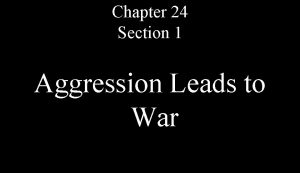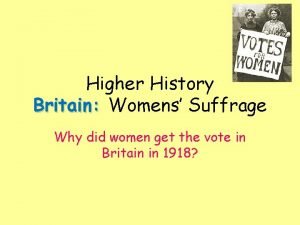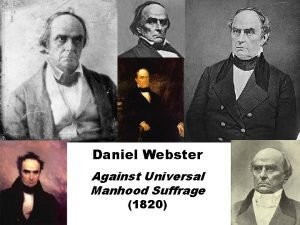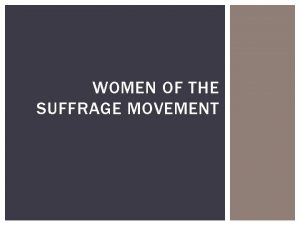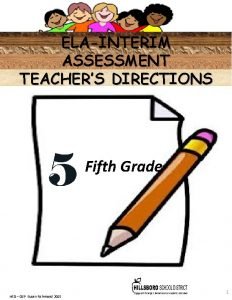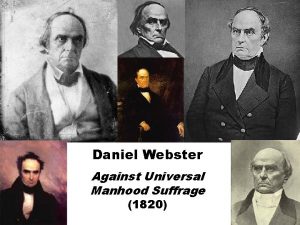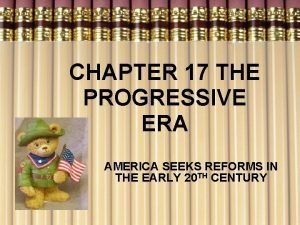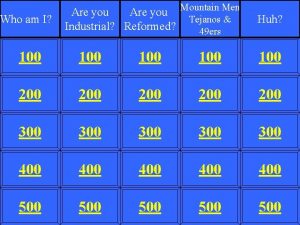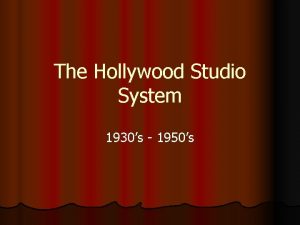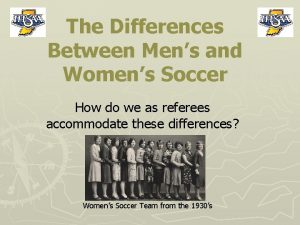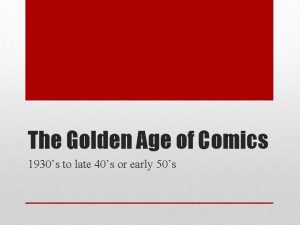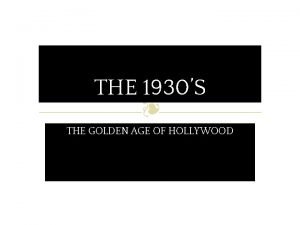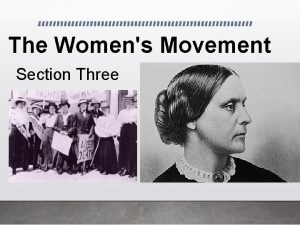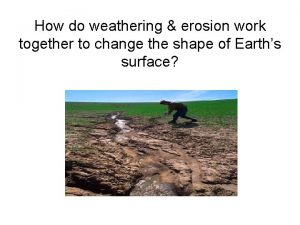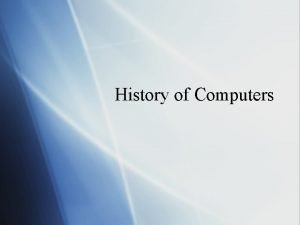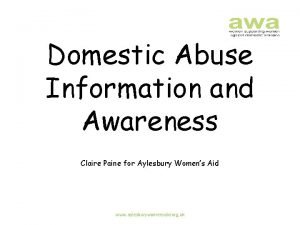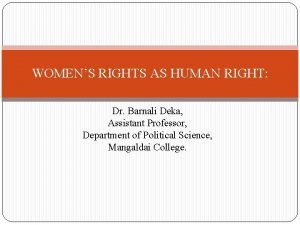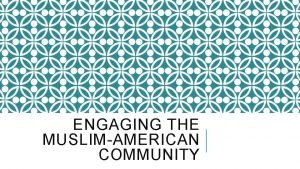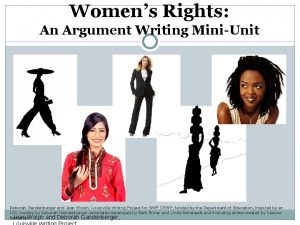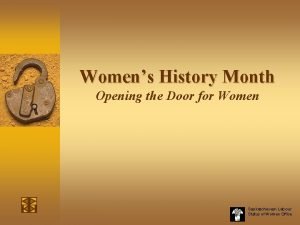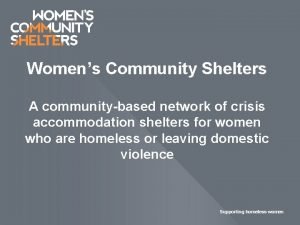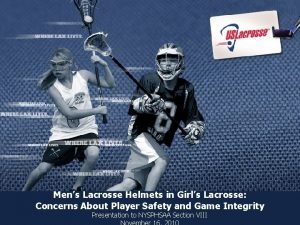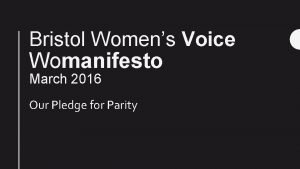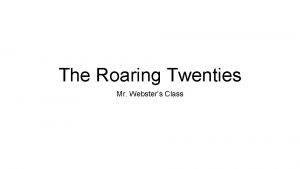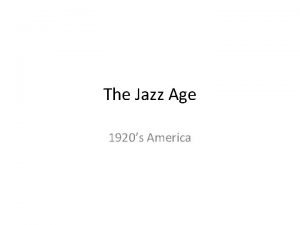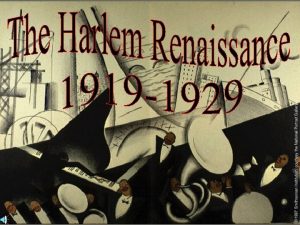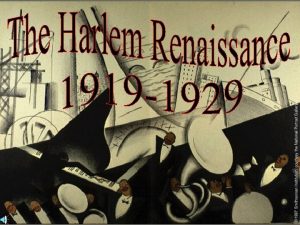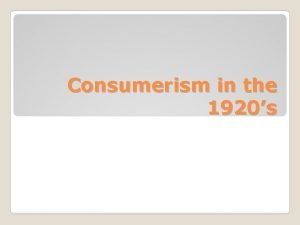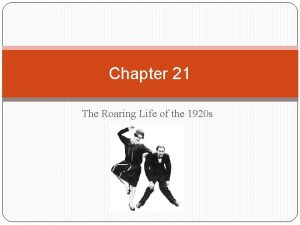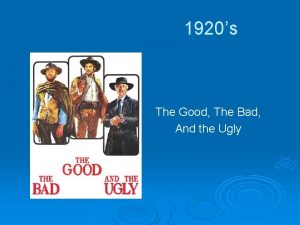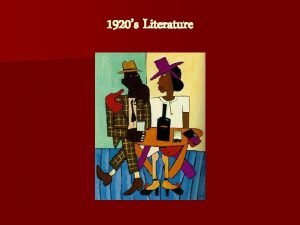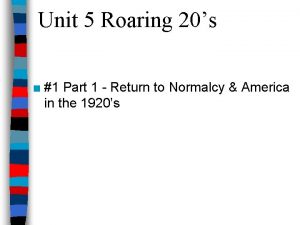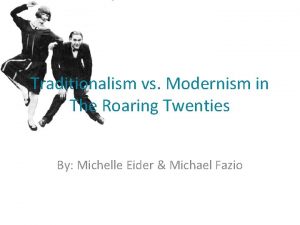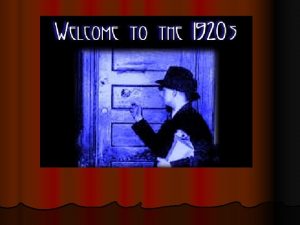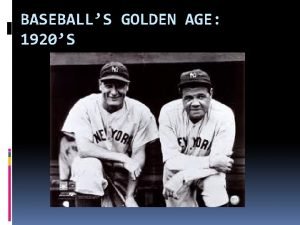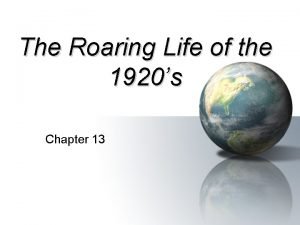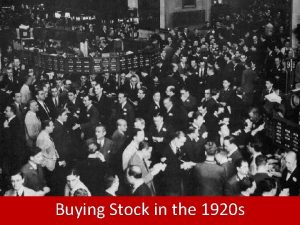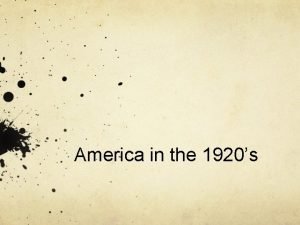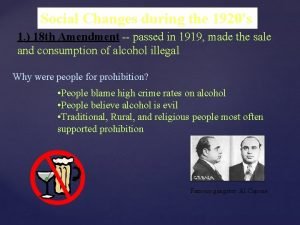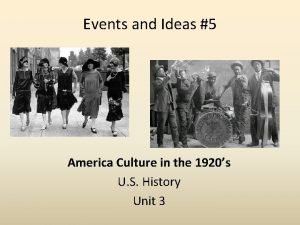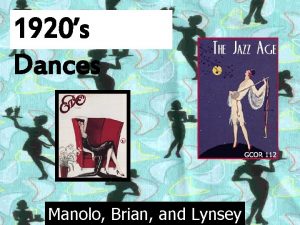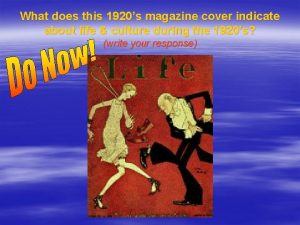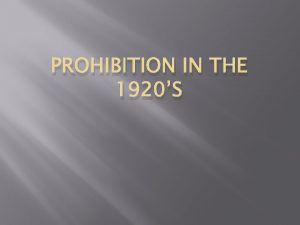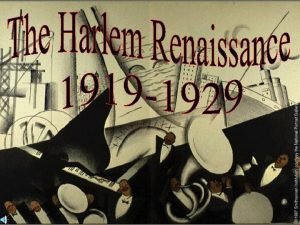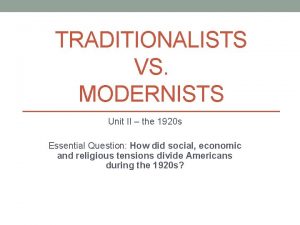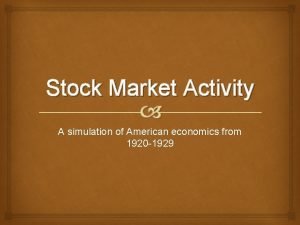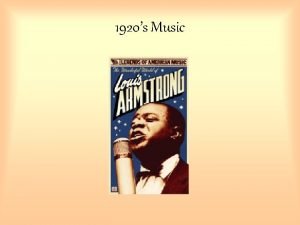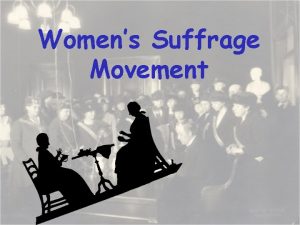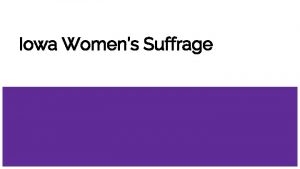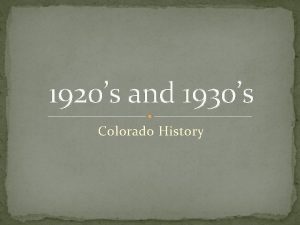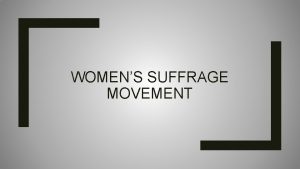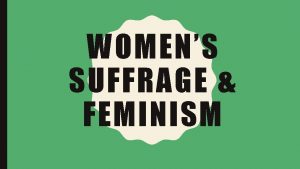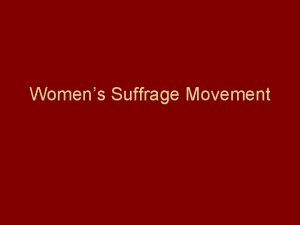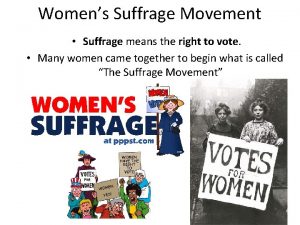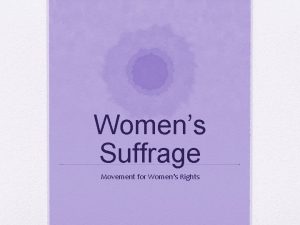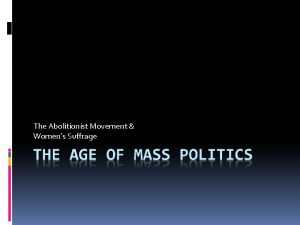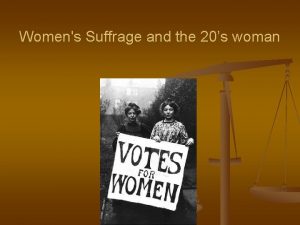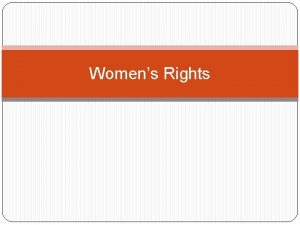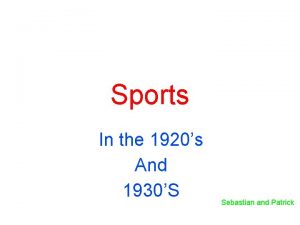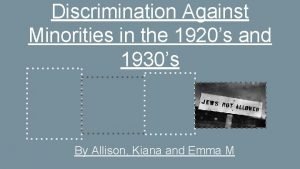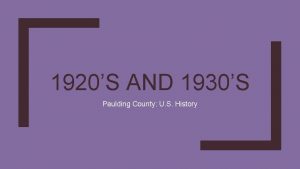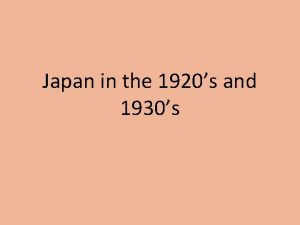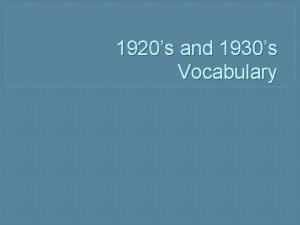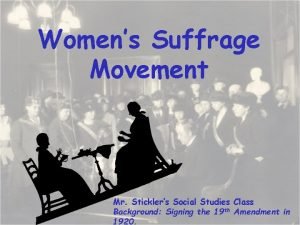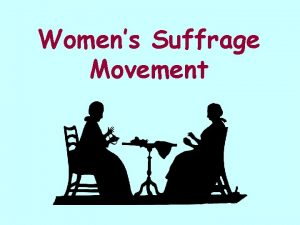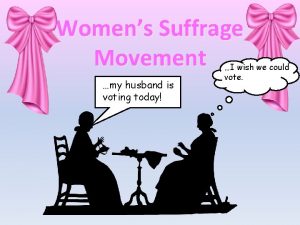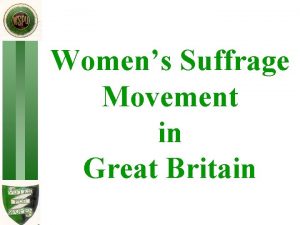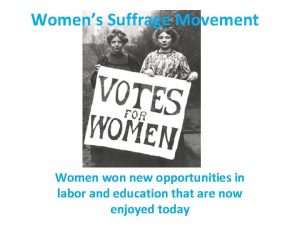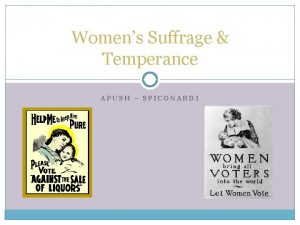1920s and 1930s Womens suffrage The movement to

































































- Slides: 65

1920's and 1930’s

Women’s suffrage

• The movement to pass federal legislation allowing women to vote • The movement has been active since the 1840’s, led by famous women including Susan B. Anthony and Elizabeth Cady Stanton, but it did not succeed on a national level until the Progressive Era, when the 19 th Amendment (1920) was passed

Flappers

• Stereotype of stylish, emancipated woman of the Jazz Age: slim with bobbed hair, a short skirt, rolled down silk stockings, make up, and sometimes a cigarette • Actually comprised a very small portion of the population, but still a widely used image in advertisements • Symbolized the 1920’s

Harlem Renaissanc e

• Broad movement of cultural innovation in the African American community during the 1920 s • Saw introduction of important black novelist, poets, and artists, as well as the introduction of jazz, lending the decade the name Jazz Age

Jazz age

• Nickname of the freewheeling 1920’s • Derived from the development of jazz music, which was free and improvisational, as was much of the age. • The era was characterized by prosperity, the popularization of entertainment (movies, radio, national magazines, sports, and the automobile), greater reliance upon science, and expanded opportunity for women

Prohibition

• Banned production, sale, and consumption of alcoholic beverages • Enacted by the 18 th Amendment (1919) and repealed by the 21 st Amendment (1933)

Scopes “Monkey” Trial

• 1925 trial in Tennessee • Tried school teacher John T. Scopes for violating state law against teaching evolution • Received national attention as a conflict between the nation’s growing reliance on science and the reassertion of religious fundamentalism • William Jennings Bryan came from Nebraska to prosecute Scopes • Famous defense attorney Clarence Darrow came from Chicago to defend him on behalf of the newly formed American Civil Liberties Union (ACLU); Scopes lost but was only fined $1 • WGN radio carried the trial live

Dust Bowl

• Nickname for the terrible conditions that made farming in the Great Plains during the Great Depression nearly impossible • Caused primarily by extended drought and wind, the removal of natural vegetation, and over farming during World War I • Worst in Oklahoma and northern Texas • People who left their land headed to California were known as Okies • Fictionalized in John Steinbeck’s The Grapes of Wrath

“Black Tuesday”

• The day of the stock market crash (October 29, 1929) that marked the beginning of the Great Depression

Great depression

• The prolonged and powerful economics recession that gripped the United States beginning with the stock market crash of “Black Tuesday” and extending until World War II • Led to urban unemployment as well as widespread farm foreclosures because of the dust bowl • Led to the election of Franklin D. Roosevelt and the implementation of New Deal legislation that expended the role of government

Okies

• Nickname for farmers who migrated west to California because of the dust bowl conditions • Fictionalized in John Steinbeck's novel, the Grapes of Wrath.

Franklin Delano Roosevelt

• President from 1932 to 1945 (when he died in office, leaving behind Vice President Harry S. Truman to become President) • Democrat • Instigated the New Deal to help America recover from the Great Depression • First president to break the two term tradition • Led the United States into World War II • Helped create the United Nations • Organized the Manhattan Project to develop the atomic bomb • First president to appoint a woman to his cabinet • Distant cousin of Theodore Roosevelt

New Deal

• Domestic agenda of Franklin D. Roosevelt to help lift America out of the Great Depression in the mid 1930’s • Broken into the First New Deal (1933 -1934) and the Second New Deal (1935 -1936) both which were broad programs regulating business and industry, providing employment through public works programs, and aiding farmers • Permanently changed the role of government in American society • First New Deal was broader in scope but not as ambitious in government spending • After the Supreme Court struck down parts of the First New Deal, Roosevelt tried to pass his “Court Packing” plan • Second New Deal was more liberal and included significantly more government spending

First Hundred Days

• Special Congressional session called by Franklin D. Roosevelt just after his inauguration • Initiated New Deal legislation (First New Deal) during this session • Most productive congressional session in history

Social Security

• Government funded social program created by Franklin D. Roosevelt during the New Deal (1935, the 2 nd New Deal) • Provides payments to support the elderly, widows, orphans, and disabled • Expanded during the Great Society • Still an existing and important program in the United States

Wagner Act

• Legislation of the New Deal (1935, Second New Deal) signed by Franklin D. Roosevelt that legalized labor unions, offered protection to strikers, and regulated working conditions • Written to replace sections of the National Industrial Recovery Act (NIRA) of the First New Deal • Large parts of the Wagner Act were repealed by the passage of the Taft-Hartley Act during the presidency of Harry S. Truman.

“Court-packing” plan

• Franklin D. Roosevelt's attempt to put more judges friendly to his New Deal agenda on the Supreme Court by adding six additional justices to the Court • Widely unpopular and legislatively unsuccessful, the plan indirectly achieved its goals as the Court reversed its course and ruled in favor of the legislation it reviewed from the Second New Deal

Eleanor Roosevelt

• Wife of Franklin D. Roosevelt • Changed the role of the first lady by being politically active • Was “the conscience” of the New Deal • Served as the first U. S. representative to the United Nations

• a) b) c) d) What amendment banned the manufacturing, sale, and distribution of liquor? 21 st 17 th 18 th 19 th

• a) b) c) d) Which of the following Constitutional amendments illustrated the success of the suffrage campaign? 21 st Amendment 19 th Amendment 17 th Amendment 4 th Amendment

• a) b) c) d) What music style started in New Orleans but moved north in the 1920's? jazz swing blues rock-n-roll

• a) b) c) d) What is the term for the 1920's female who smoke, drank, and wore make-up? Flapper Gibson Girl Floozy Clara Bow

• a) b) c) d) What organization terrorized nonprotestant and non-white people in the U. S. during the 1920's? Fascists Nazi party Temperance Movement Ku Klux Klan

• a) b) c) d) The development of literature, art, and music in the 1920 s brought about in the African American community are collectively known as what? The Harlem Renaissance The Hudson River School The Transcendentalist movement The Jazz Age

• a) b) c) d) All of the following characterized the Jazz Age of the 1920 s EXCEPT a freer, faster-paced lifestyle in American cities economic fear and concern great opportunity for women outside of the home an increase in the number of colleges open to women

• a) b) c) d) Who became the baseball icon of the 1920's? Ty Cobb Hank Aaron Cal Ripken, Sr. Babe Ruth

• a) b) c) d) Which of the following technological innovations contributed most to the new, fast-paced lifestyle popular in the 1920 s? the automobile the phonograph the plane the telegraph

• a) b) c) d) By the 1920 s most Americans owned an automobile. This was due to Henry Ford's revolution in the factories with the invention of the steam engine assembly line railroad engine 40 hour work week

• a) b) c) d) Who rose to power as Italy's dictator in the 1920's? Francisco Franco Benito Mussolini Adolf Hitler Joseph Stalin

• a) b) c) d) Who made the first successful trans-continental flight across the Atlantic Ocean in 1927? Amelia Earhart Rudolph Valentino Charles Lindbergh Neil Armstrong

• a) b) c) d) Why did many people invest what money they had in the stock market? to help our economy to save their money but make a little interest it was a source of entertainment to get rich quick

• What was the long-term effect of the Smoot-Hawley Tariffs and other protectionist trade measures? a) They had little impact on the health of the global economy. b) They sparked retaliatory tariffs in European nations, crippling world trade. c) They stimulated European leaders to form the European Economic Community. d) They improved the ability of American products to compete in foreign markets.

• a) b) c) d) What is the nickname for the day the stock market crashed? Great Depression Black Friday Black Tuesday Red Wednesday

• a) b) c) d) What was the month, day, year of the stock market crash? October 29, 1929 October 26, 1939 October 24, 1929 September 1, 1939

• a) b) c) d) Which is NOT a reason why the stock market crashed? President Hoover did not react with federal action. Federal Reserve System left too much money in circulation. World trade stopped due to the rise in tariffs. Citizens borrowed money they did not have to purchase stock and could not repay the loan when the market crashed.

• a) b) c) d) Which is NOT an effect of the stock market crash on the United States? people migrated looking for jobs new banks opened people became homeless unemployment increased

• a) b) c) d) What group of people made up the Bonus Army who marched to Washington D. C. asking Congress for their money early? Government employees who lost their jobs during the Depression World War I veterans Factory workers Civil War veterans

• a) b) c) d) Which of the following was NOT a major contributor to the Dust Bowl of the 1930 s? sustained drought removal of natural vegetation over farming of land to meet increased demands during World War One abandonment of farms by people moving west

• a) b) c) d) How did Hoover and Roosevelt react to the U. S. economy and people during the Great Depression? Hoover and Roosevelt both took the "hands-off" approach to government intervention in the economy. Hoover and Roosevelt both instituted effective, direct government programs to help the economy. Hoover started government intervention programs, but Roosevelt stopped them. Hoover believed the businesses needed to react while Roosevelt believed federal government intervention was the only way to help the economy.

• a) b) c) d) Who won the election of 1932? Herbert Hoover Franklin D. Roosevelt Calvin Coolidge Warren G. Harding

• a) b) c) d) Who said, "We have nothing to fear, but fear itself? " Herbert Hoover Franklin D. Roosevelt Woodrow Wilson Harry S. Truman

• a) b) c) d) Which president was NOT a Republican president? Franklin D. Roosevelt Herbert Hoover Warren G. Harding Calvin Coolidge

• a) b) c) d) The sweeping legislative agenda that Franklin D. Roosevelt proposed to aid Americans during the Great Depression was called what? Great Society New Deal Fair Deal Square Deal

• a) b) c) d) Which program employed thousands of people to complete a variety of jobs such as building construction, creating murals, and recording folklore? Social Security Act Works Progress Administration (WPA) Agricultural Adjustment Act (AAA) Federal Deposit Insurance Corporation (FDIC)

• a) b) c) d) Which program provides pension for the elderly, orphaned, or injured? Works Progress Administration (WPA) Social Security Act Agricultural Adjustment Act (AAA) Federal Deposit Insurance Corporation (FDIC)

• a) b) c) d) Which program paid farmers subsidies to not plant crops or raise more animals so prices would increase as we use up the surplus? Works Progress Administration (WPA) Agricultural Adjustment Act (AAA) Federal Deposit Insurance Corporation (FDIC) Social Security Act

• a) b) c) d) Which program ensures savings deposits in all member banks? Social Security Act Works Progress Administration (WPA) Agricultural Adjustment Act (AAA) Federal Deposit Insurance Corporation (FDIC)

• a) b) c) d) Which is NOT an "R" from Roosevelt's New Deal legislation? reform the laws so this does not happen again reinstate the banks so people can get their money recovery measures to stimulate the economy relief to the unemployed
 Francisco franco aggressive actions
Francisco franco aggressive actions Higher history women's suffrage essay
Higher history women's suffrage essay Universal manhood suffrage
Universal manhood suffrage Women suffrage
Women suffrage The fight for women's suffrage readworks answer key
The fight for women's suffrage readworks answer key Universal male suffrage definition
Universal male suffrage definition Women suffrage
Women suffrage Suffrage
Suffrage Higher history women's suffrage essay
Higher history women's suffrage essay The hollywood studio system in the 1930s and 1940s
The hollywood studio system in the 1930s and 1940s Difference between mens and womens soccer
Difference between mens and womens soccer Marvel comics 1930s
Marvel comics 1930s Golden age of hollywood 1930s
Golden age of hollywood 1930s Etheer
Etheer Needs of adolescence
Needs of adolescence Womens rights
Womens rights Late night womens hour
Late night womens hour Dust bowl 1930s
Dust bowl 1930s Computers in 1930s
Computers in 1930s Womens aid aylesbury
Womens aid aylesbury Womens right
Womens right Womens college kumbakonam
Womens college kumbakonam Womens college kumbakonam
Womens college kumbakonam Womens right
Womens right Womens shelter edmonton
Womens shelter edmonton Womens rights
Womens rights Female reproductive system external
Female reproductive system external Womens history month door
Womens history month door Womens community shelters
Womens community shelters Ballybeen womens centre
Ballybeen womens centre Scarborough womens centre
Scarborough womens centre Girls lacrosse helmets
Girls lacrosse helmets Bristol womens voice
Bristol womens voice Light gun signals
Light gun signals What are the 7 axial movements
What are the 7 axial movements Durant motors stock
Durant motors stock Florida land boom of the 1920s
Florida land boom of the 1920s Jazz 1920s america
Jazz 1920s america Map of harlem 1920s
Map of harlem 1920s Harlem map 1920s
Harlem map 1920s Buying on credit 1920s
Buying on credit 1920s Chapter 21 the roaring life of the 1920s
Chapter 21 the roaring life of the 1920s Was the 1920s good or bad
Was the 1920s good or bad 1920s literature
1920s literature Sports mania in the 1920s
Sports mania in the 1920s Traditionalism vs modernism in the 1920s
Traditionalism vs modernism in the 1920s Roaring twenties were characterized by
Roaring twenties were characterized by Why did the kkk reemerge in the 1920s
Why did the kkk reemerge in the 1920s The 1920s were known as the
The 1920s were known as the Baseball's golden age
Baseball's golden age Chapter 13 the roaring life of the 1920s
Chapter 13 the roaring life of the 1920s Midland utilities 1920s
Midland utilities 1920s 1920s fun facts
1920s fun facts 1920s social changes
1920s social changes 1920s america
1920s america Manolo dance
Manolo dance Magazine covers 1920s
Magazine covers 1920s What does prohibition mean in the 1920s
What does prohibition mean in the 1920s Harlem map 1920s
Harlem map 1920s Modernism vs traditionalism 1920s
Modernism vs traditionalism 1920s Kroger foods stock 1920
Kroger foods stock 1920 George gershwin 1920s
George gershwin 1920s Hình ảnh bộ gõ cơ thể búng tay
Hình ảnh bộ gõ cơ thể búng tay Frameset trong html5
Frameset trong html5 Bổ thể
Bổ thể Tỉ lệ cơ thể trẻ em
Tỉ lệ cơ thể trẻ em
